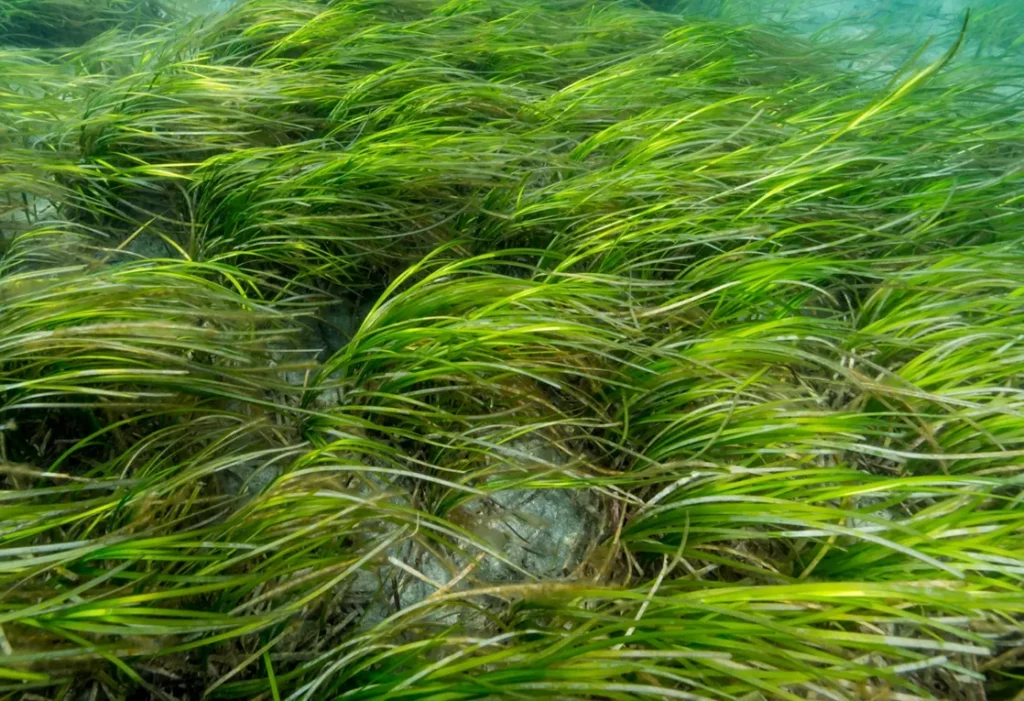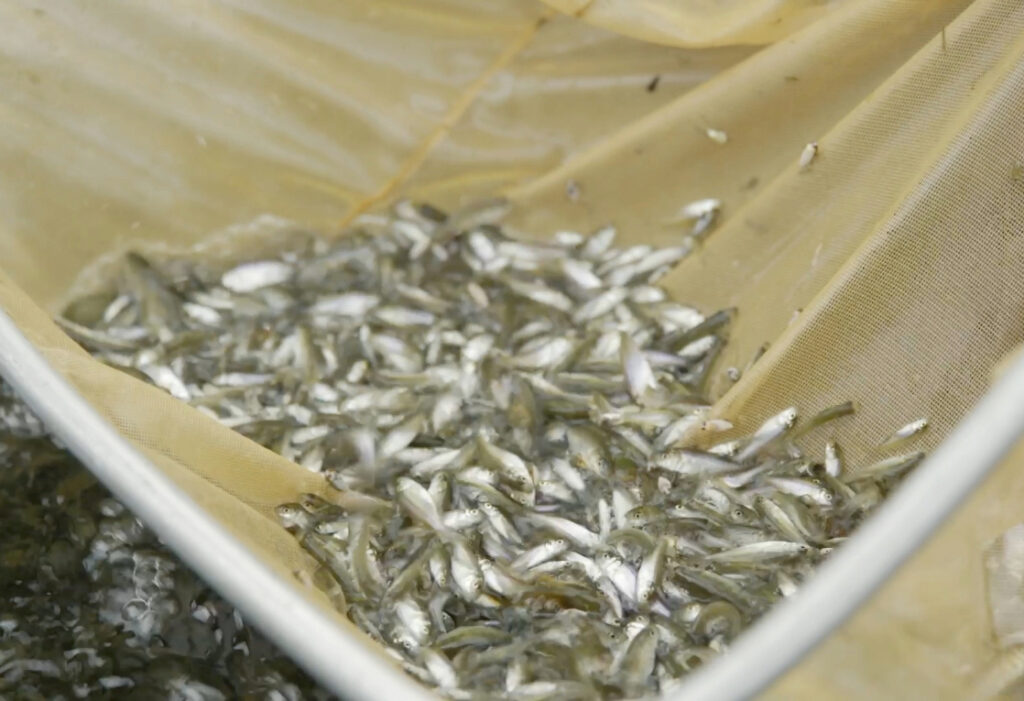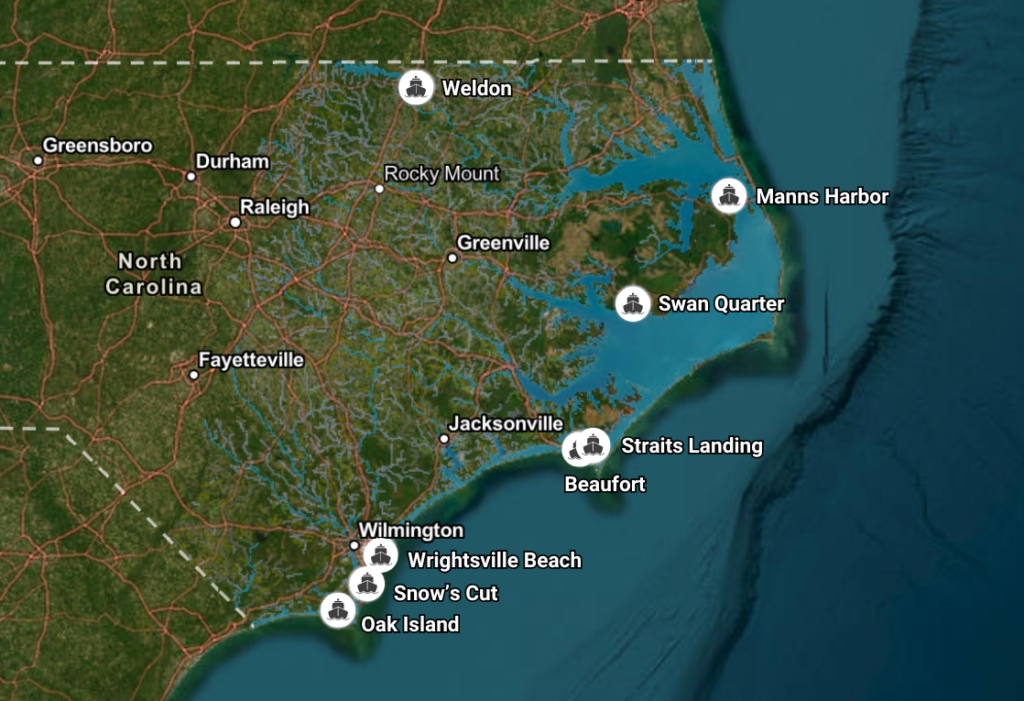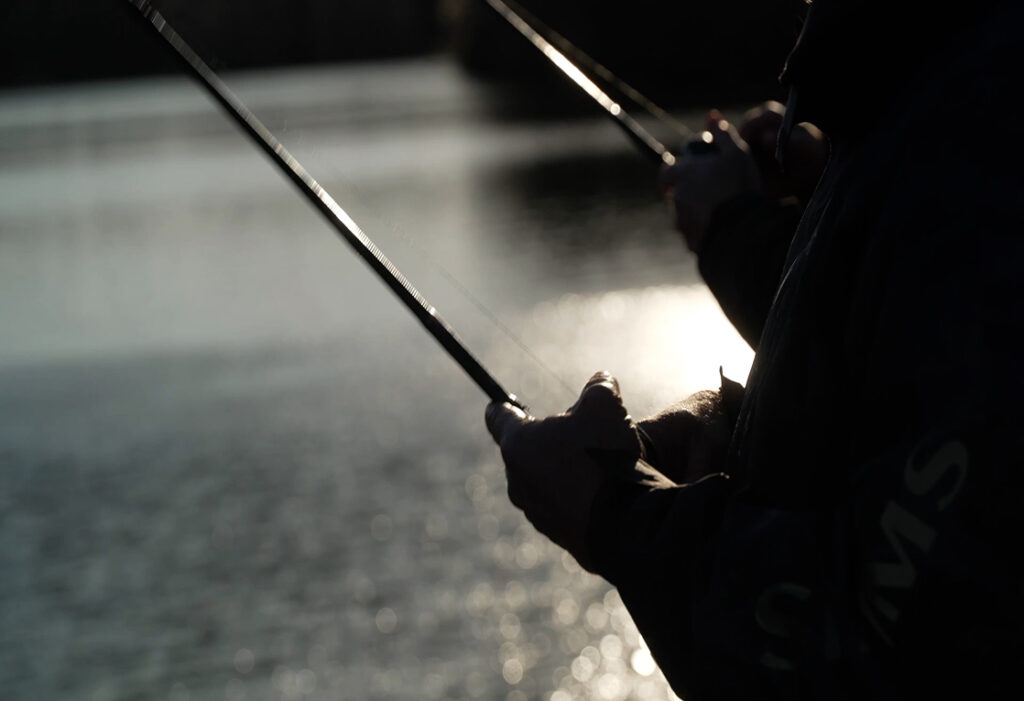Along North Carolina’s coast, thousands of acres of seagrasses and other submerged aquatic vegetation (SAV) form productive ecosystems where marine life flourishes. Though little indication from above, these lush water-dwelling meadows endure the ecological challenges produced by man and nature to safeguard our coastal resources and enhance fishery habitats. They are some of the most prolific marine bionetworks on earth, and North Carolina boasts the greatest extent of seagrasses and other SAV on the Atlantic seaboard.
North Carolina’s coastal floor sustains two main types of SAV, shoal grass and eelgrass. Because they require a unique environment of soft sediment where sunlight can effectively penetrate the water, these aquatic plants are rarely found at depths greater than 6 feet in our state. While shoal grass usually grows year-round, eelgrass typically develops during the fall and spring, or when water temperatures reach an optimal range of 50-68 °F. Shoal grass resembles land grass with short green blades that shape dense underwater meadows. On the other hand, eelgrass is similar to wild celery and bares long green leaves that provide fortifying shelter for juvenile fish and crustaceans.
Aside from providing a healthy habitat for North Carolina’s coastal resources, the roots of shoal grass and eelgrass keep sediment in place, which helps increase water clarity. These seagrasses are also considered the first line of defense for storms because they reduce wave energy and protect shorelines from erosion. Plus, they effectively improve marine environments by absorbing excess nutrients, filtering pollutants, and pumping clean oxygen into the water and submerged soil. As a result, organisms such as bristle worms inhabit the underwater soil and support the diets of inshore species such as speckled trout, red drum, and flounder.
As challenges produced by man and nature increase, we must be the keepers of the marine life that has supported humanity for generations. North Carolina’s citizens and visitors should do their part to ensure our seagrasses and SAV can continue to provide their many benefits to facilitate flourishing ecosystems along our coast. Because without these underwater meadows, we cannot ensure a bright outlook for our inshore fisheries. So next time you’re on the water, Think Coastal and do your part to prevent these irreplaceable hidden gems of our coastal fishery from diminishing.

